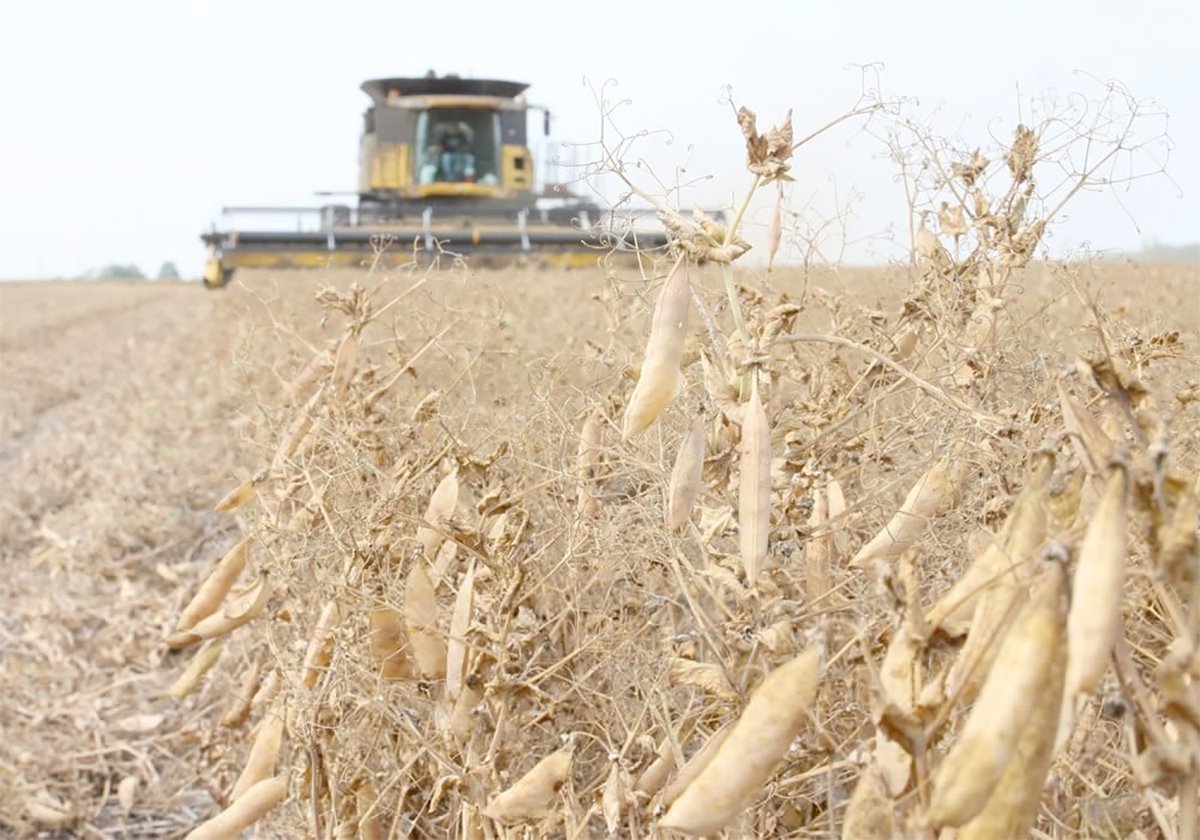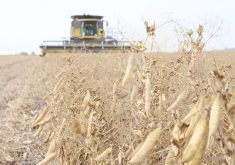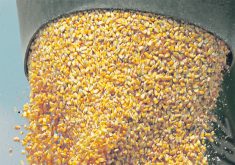They had passed the empty Eaton’s flagship store in the deserted downtown core, and rounded the corner of Portage and Main, the site of so many historic protests.
They looked up at office workers looking down from the bank towers, the commodity exchange building, the grain commission and Agriculture Canada.
But when the marchers reached Broadway Ave., Beausejour, Man., farmer Gerald Peluk spied the building from which he’d like to receive a cheque.
Pointing out the headquarters of the Western Canadian Lotteries Corporation, he recalled the time he matched five numbers in a lottery and won $1,800. Peluk, a veteran of farm protests, sees marching as a ticket to try to pry more money from governments to save the ailing farm sector.
Read Also

Chinese, Indian tariffs take toll on pea prices
The disruption of pea exports from Canada’s largest customers will likely result in slow pea exports for the remainder of the crop year.
“I’ve been protesting all my life,” he said, trudging down the street in a drab olive work snowsuit and boots, clutching a loaf of white bread in one of his big-mittened hands.
He remembered marching down the same street in 1977, when farmers faced low prices and pinched incomes. Another march in 1988 pried $800 million out of the Mulroney government within weeks.
But 2000 has been Peluk’s worst financial year ever.
“This shows there’s a crisis out there,” he said, as the march drew closer to the Manitoba Legislature.
Sporting a “collector’s item” hemp ballcap with the logo of a bankrupt processor, Dave Rutledge of Gainsborough, Sask., minced no words about why he joined the rally.
“Because we’re starving to death trying to farm,” said Rutledge. “We’ve diversified as much as we can and everything we try gets overdone.”
There were 1,000 farmers at the rally held March 14. About 25 of them ending up staying at the Legislature until March 16, meeting with various federal and provincial politicians.
Rutledge said he was disappointed more farmers didn’t turn up to march.
“There’s so many people who give up, who don’t feel there’s anything we can do,” he said.
Stuart Millar, an auctioneer from Melita, Man., brought a flat-bed and a microphone to talk to people who stared from the sidewalk or opened their car windows, giving farmers the thumbs-up.
Millar said he likes to do retirement auctions, not those from farm foreclosures, which he worries will start to pick up if governments don’t step in with more aid to help farmers.
“People think that, you know, this (crisis) is great for us auctioneer people to make a living, but it’s not the way we like to make a living,” said Millar.
Farmer Rich Nield of Darlingford, Man., has dreamed up political cartoons depicting the absurdity he sees in the farm aid offered so far by the federal government.
“Sure, it’s a lot of money,” he said, but explained it adds up to only $5 per acre.
His fuel bill is $10 per acre, and fertilizer and chemicals to put in a crop cost $60 per acre. For the fourth year in a row, returns from crops won’t cover the costs of planting and harvesting them.
“So you see where $5 goes? Nowhere! That’s what Ottawa cannot and will not understand,” Nield said.














